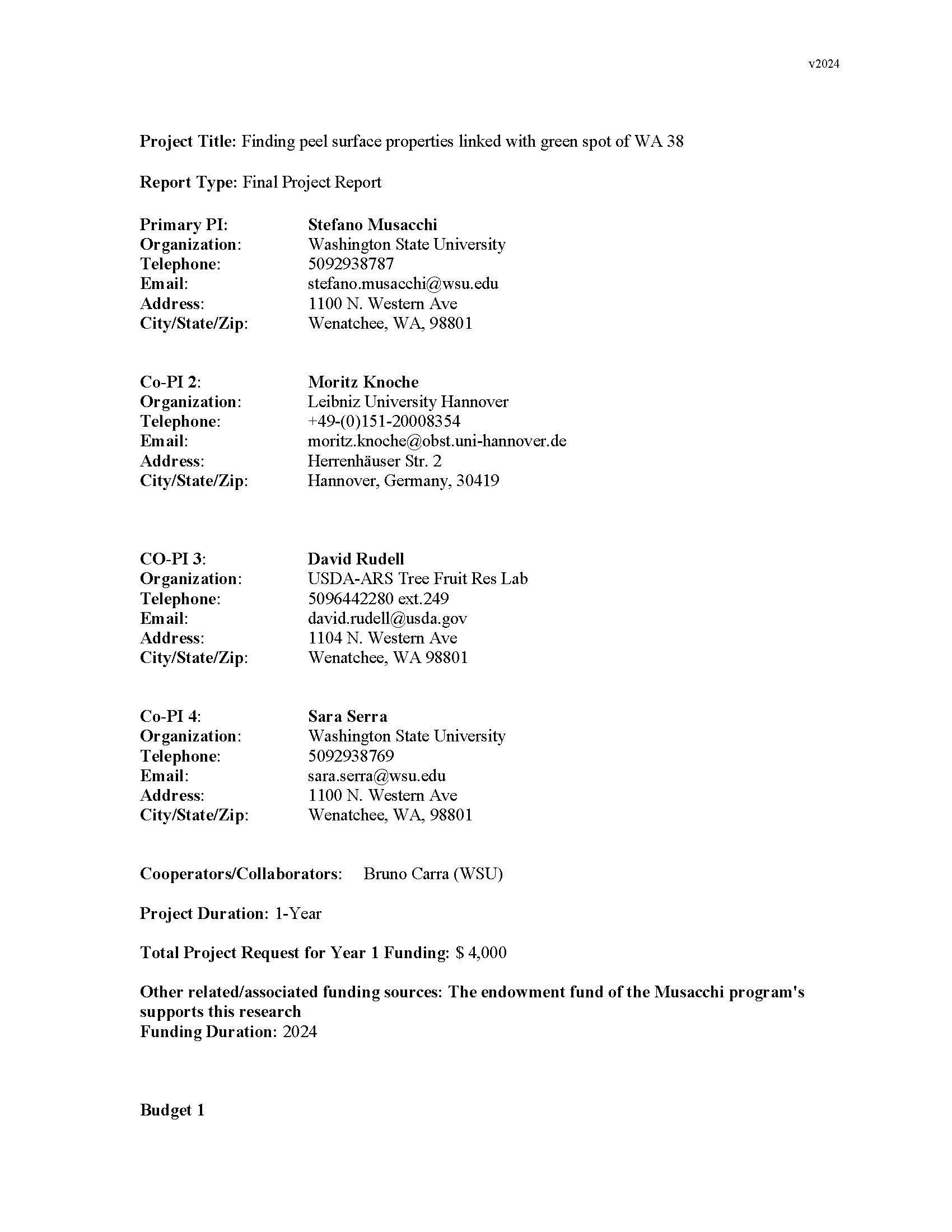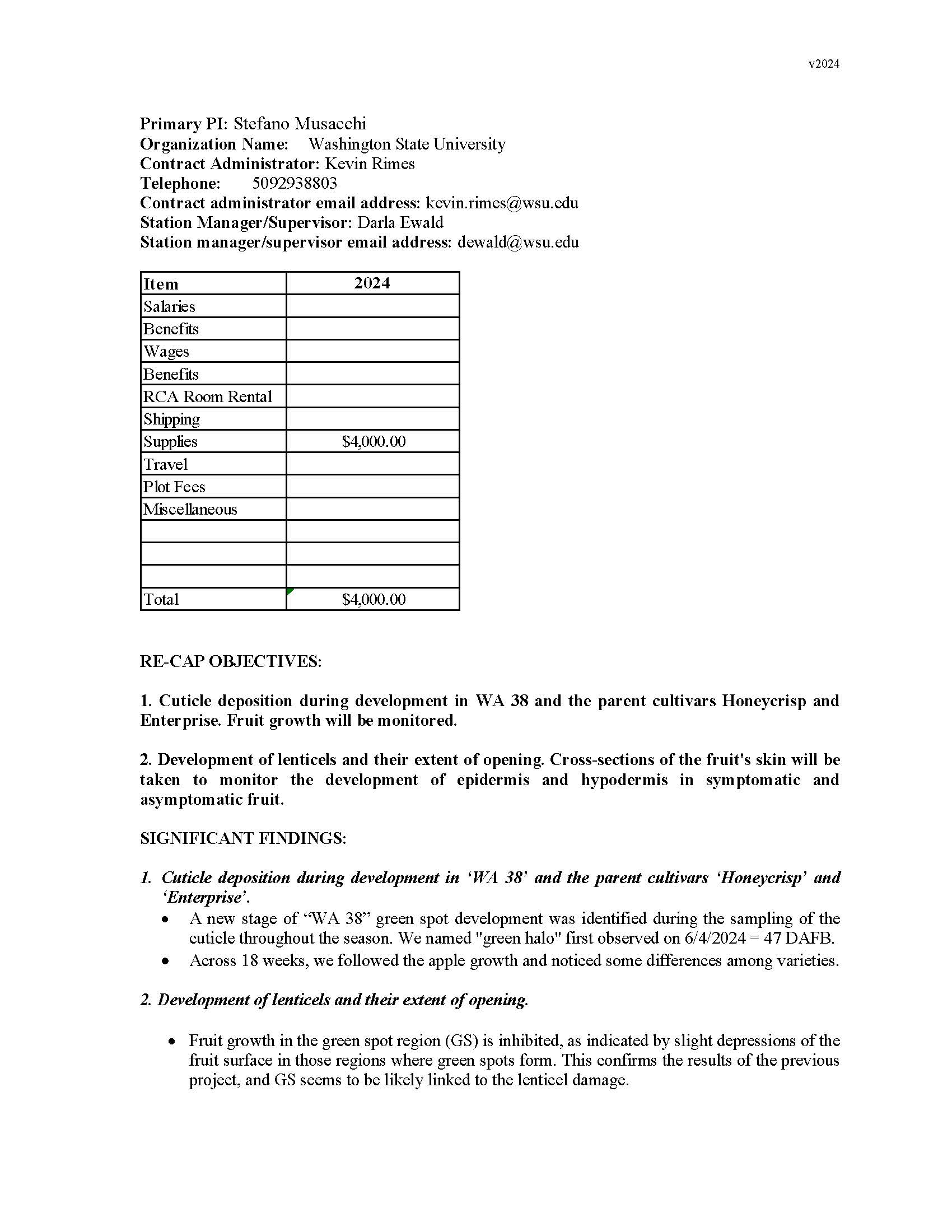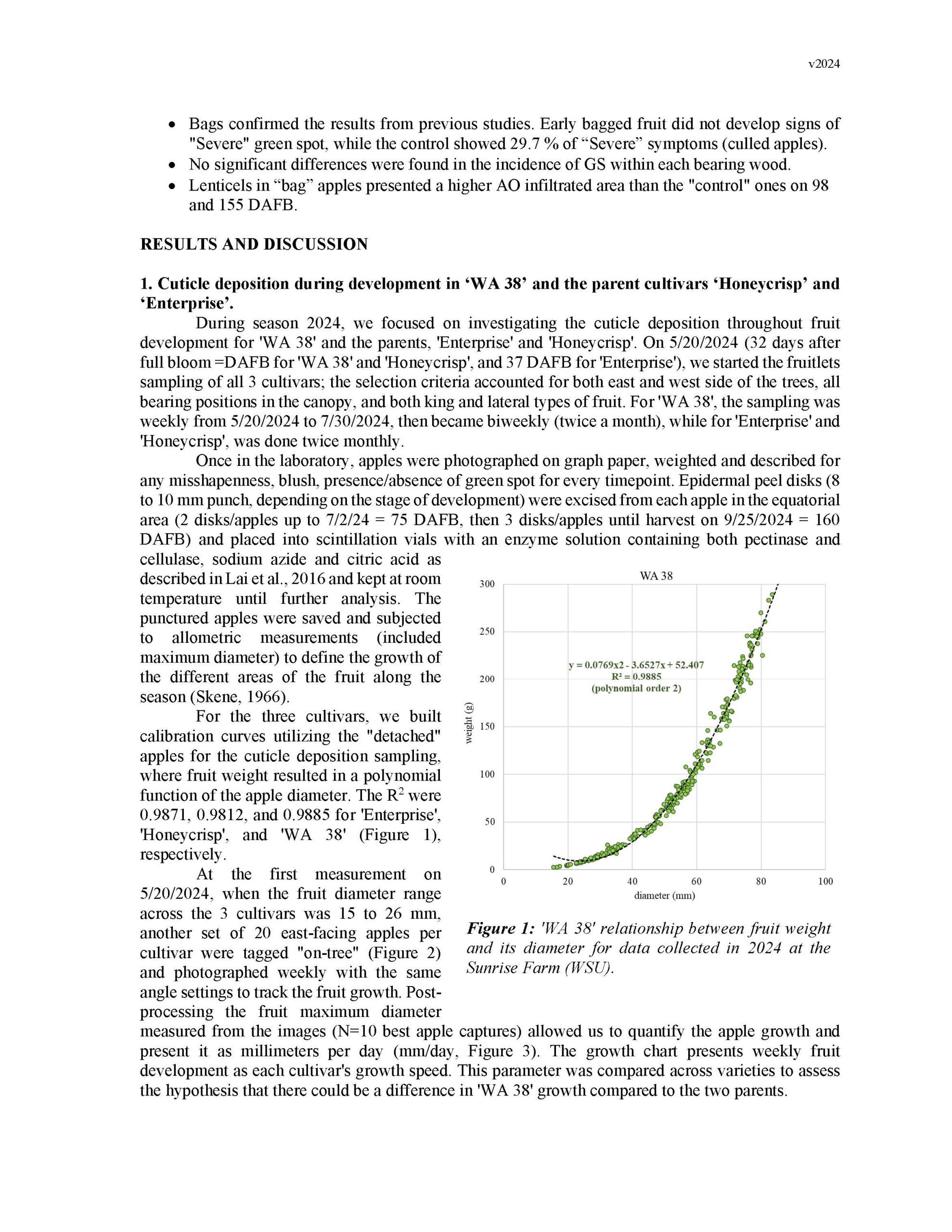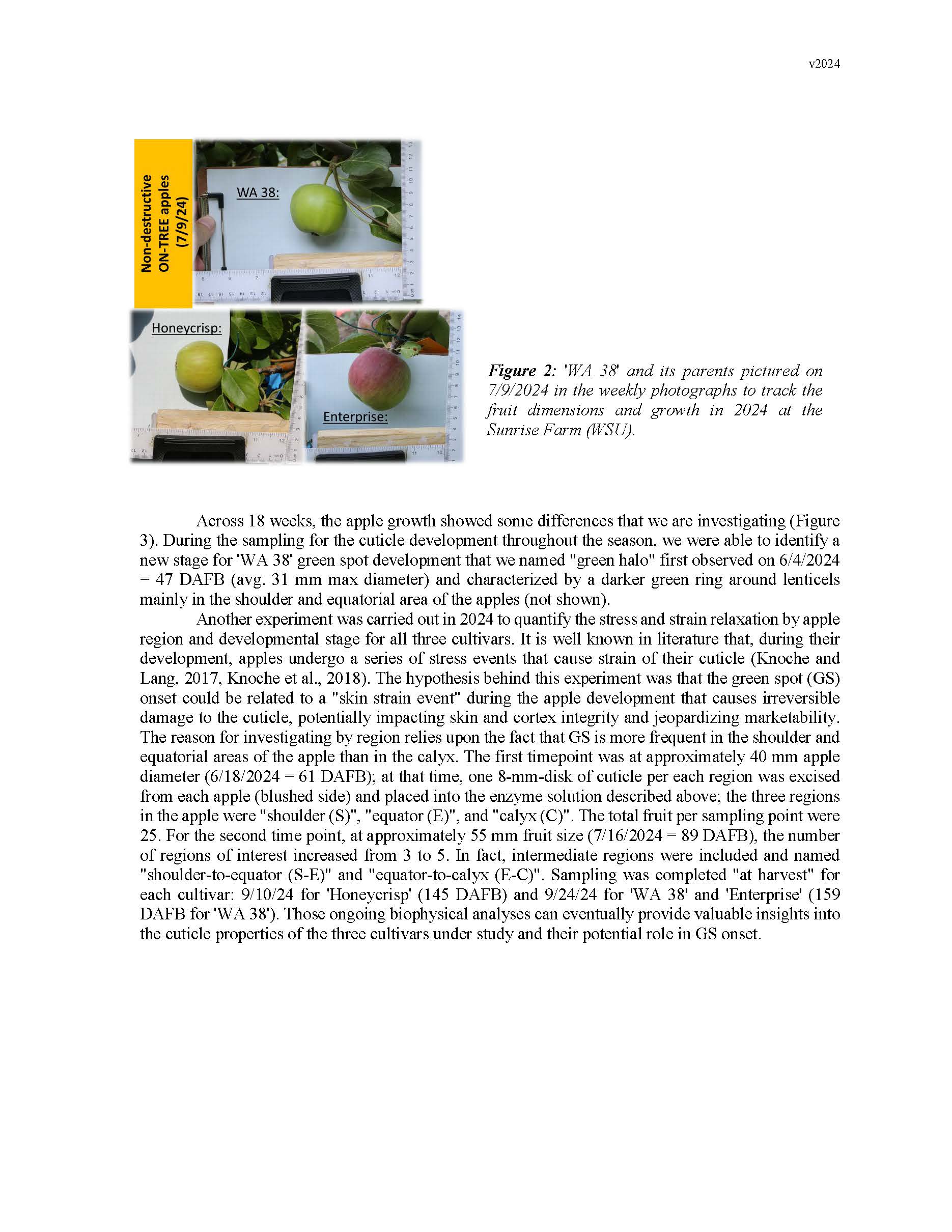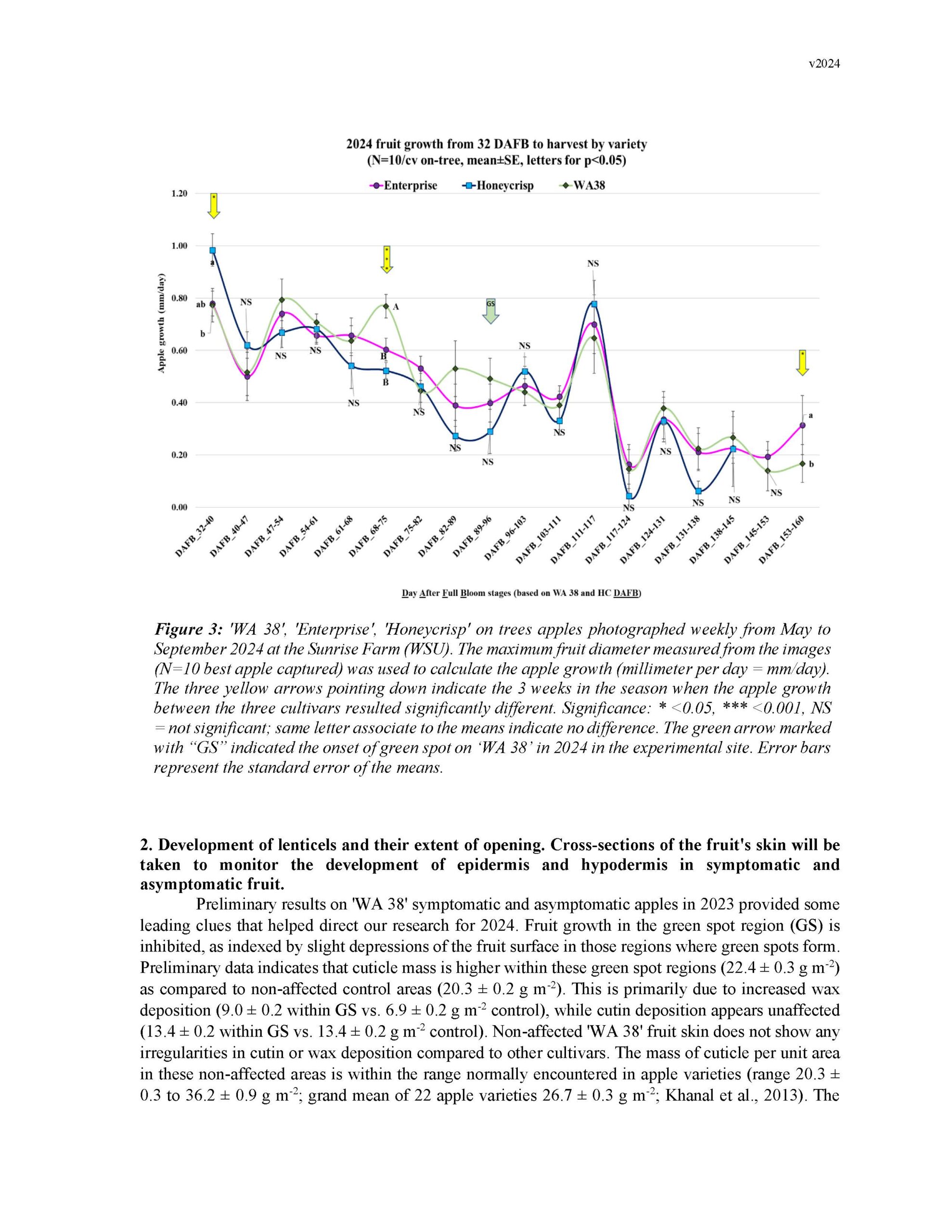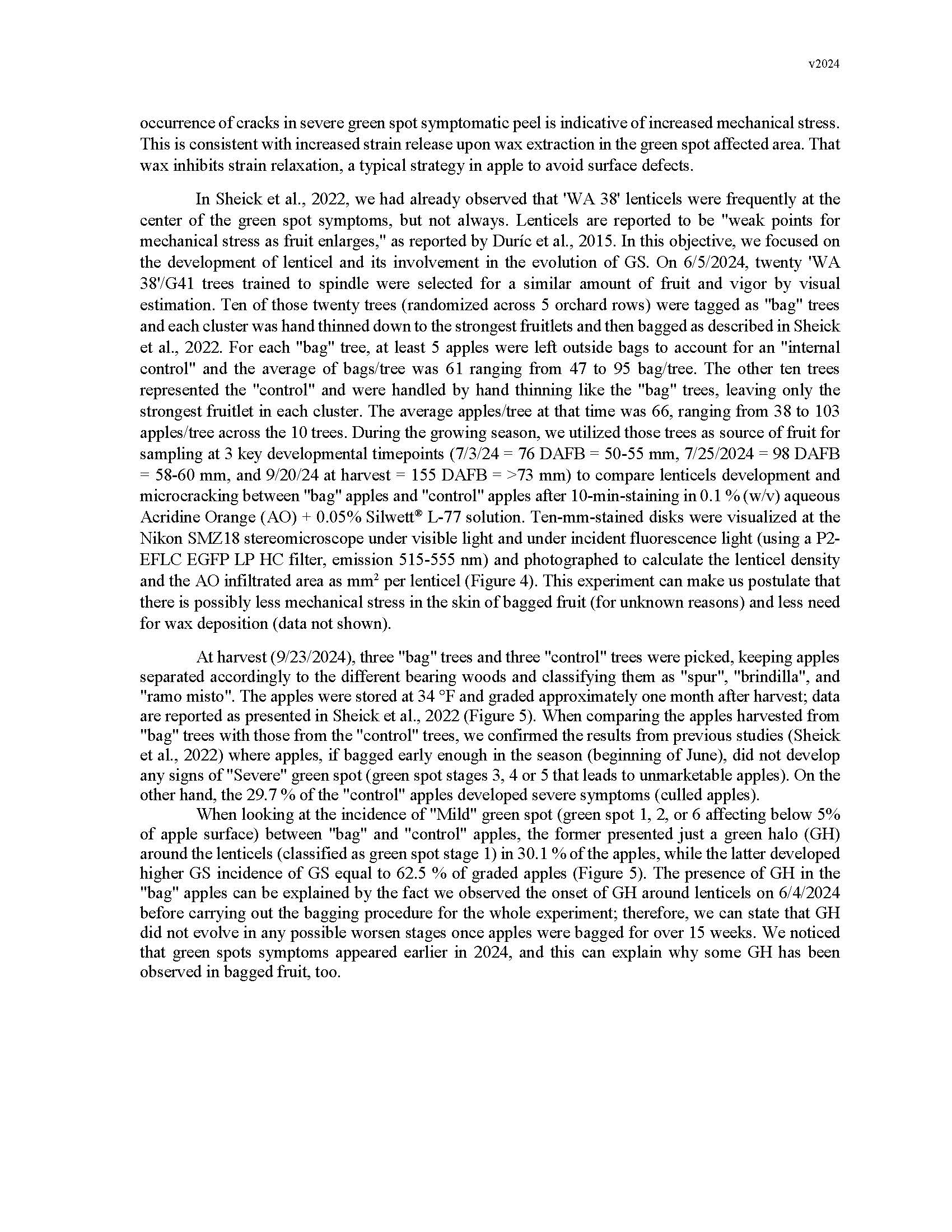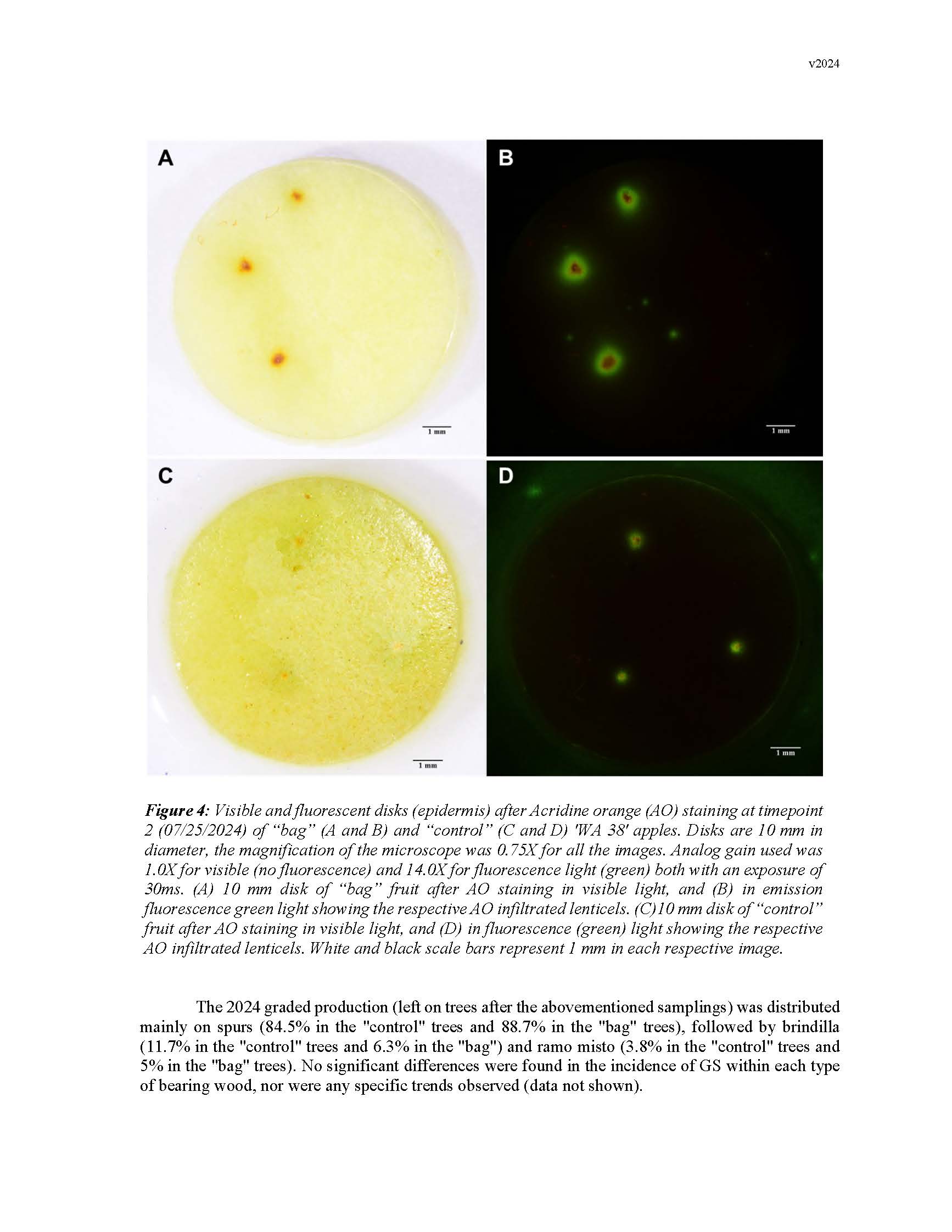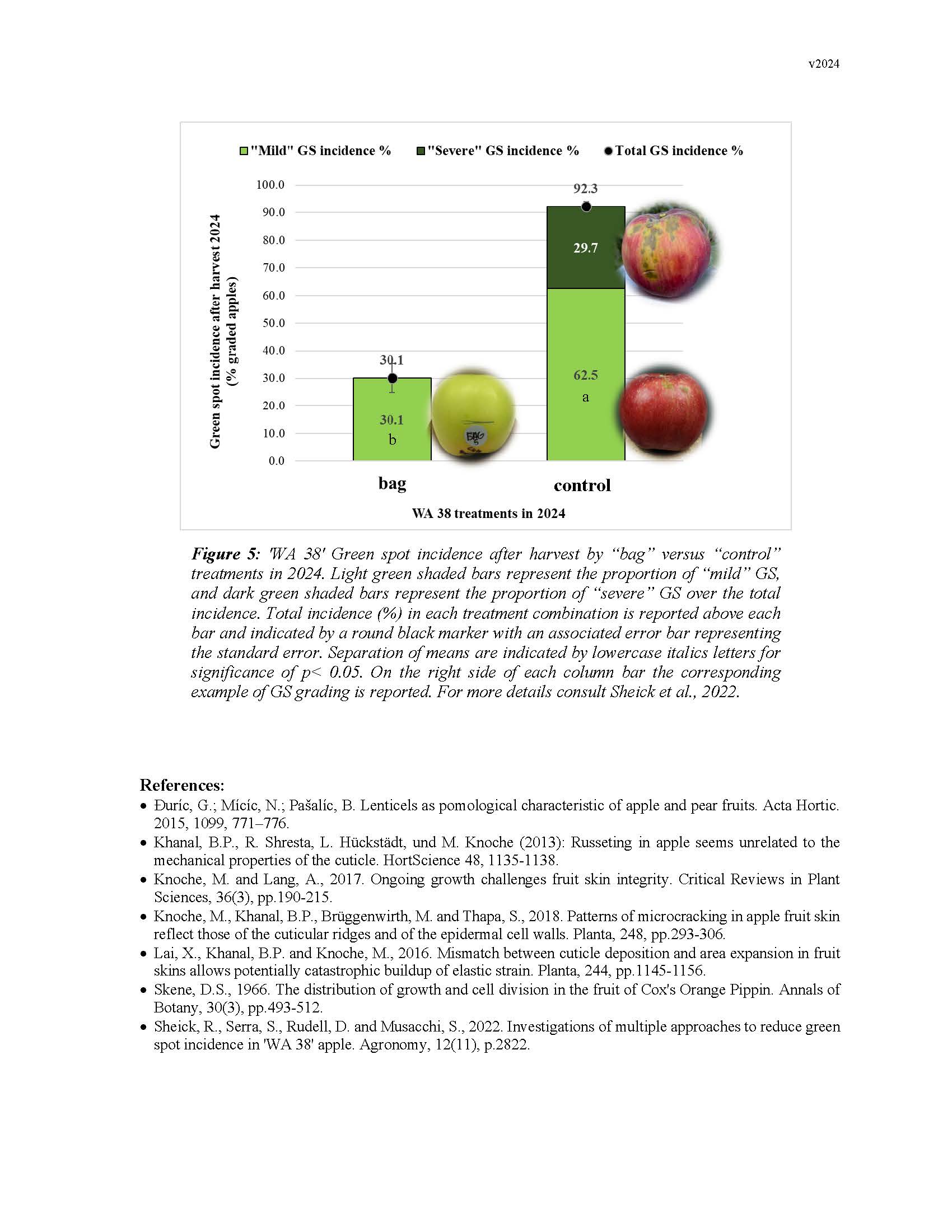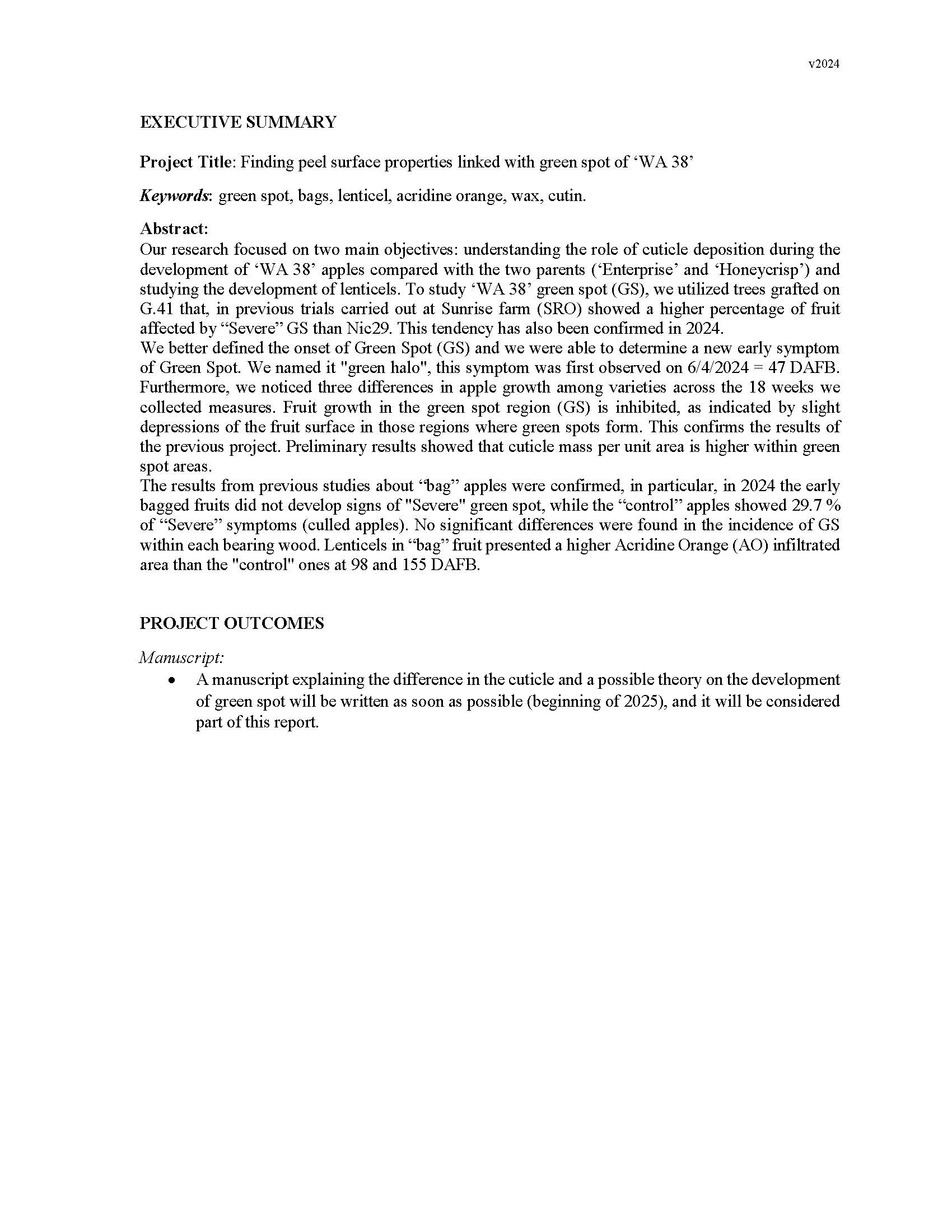Finding peel surface properties linked with green spot of WA 38
Author: Stefano Musacchi
Published: 2025
Summary: Our research focused on two main objectives: understanding the role of cuticle deposition during the development of ‘WA 38’ apples compared with the two parents (‘Enterprise’ and ‘Honeycrisp’) and studying the development of lenticels. To study ‘WA 38’ green spot (GS), we utilized trees grafted on G.41 that, in previous trials carried out at Sunrise farm (SRO) showed a higher percentage of fruit affected by “Severe” GS than Nic29. This tendency has also been confirmed in 2024. We better defined the onset of Green Spot (GS) and we were able to determine a new early symptom of Green Spot. We named it "green halo", this symptom was first observed on 6/4/2024 = 47 DAFB. Furthermore, we noticed three differences in apple growth among varieties across the 18 weeks we collected measures. Fruit growth in the green spot region (GS) is inhibited, as indicated by slight depressions of the fruit surface in those regions where green spots form. This confirms the results of the previous project. Preliminary results showed that cuticle mass per unit area is higher within green spot areas. The results from previous studies about “bag” apples were confirmed, in particular, in 2024 the early bagged fruits did not develop signs of "Severe" green spot, while the “control” apples showed 29.7 % of “Severe” symptoms (culled apples). No significant differences were found in the incidence of GS within each bearing wood. Lenticels in “bag” fruit presented a higher Acridine Orange (AO) infiltrated area than the "control" ones at 98 and 155 DAFB.
Keywords:

